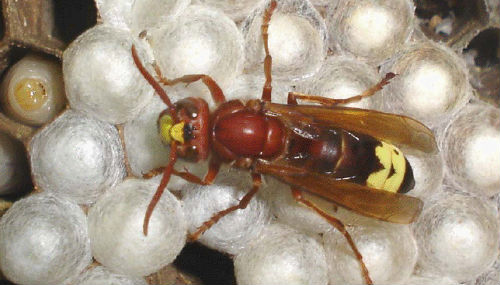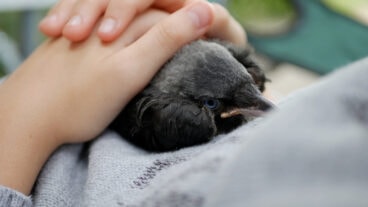While abundant resources are channeled to converting sunlight into power, it emerges that the common Oriental hornet has known the secret all along.

“These structures are very complicated,” Plotkin explained. “To build something similar would be very expensive and complicated, but the insects do it naturally. Their cells secrete all the building blocks and they just do self-assembly.”
As billions of dollars are poured into perfecting the elaborate process of converting sunlight into power, it turns out an ordinary insect called the Oriental hornet does it with only the help of Mother Nature.
Tel Aviv University (TAU) Prof. Jacob S. Ishay had long ago observed that unlike most members of the wasp family, the Oriental hornet ramps up its nest-digging when the sun is at its brightest. The late scientist guessed that it might somehow be harnessing solar radiation.
Three years ago, graduate student Marian Plotkin approached Ishay in search of suggestions for a doctoral project that would combine his interests in biotechnology and electricity.
Ishay had found his man. He encouraged Plotkin to search for the mechanism behind the hornet’s extraordinary ability. An understanding of how this wasp generates energy from light could, he theorized, be helpful in the ongoing quest to find cheaper ways of using the sun as an alternative electricity source for humans.
In October, Plotkin and colleagues published their findings in the journal Naturwissenschaften. ISRAEL21c caught up with Plotkin via Skype at the National University of Singapore’s Nanoscience and Nanotechnology Initiative, where he’s just begun a fellowship in tissue engineering.
Proving the theory correct
“Most people wouldn’t notice these hornets, but their nests are very common,” Plotkin related. “We collected them in the field right outside the university.”
After many examinations performed on anesthetized bugs, his crew discovered that the shell covering the Oriental hornet’s body acts as a natural photovoltaic cell. Manmade PV cells (photo means “light” and voltaic means “electricity”) convert sunlight into electricity through semiconductor materials, usually silicon. The semiconductor absorbs the rays, whose energy knocks electrons loose into an electrical current. The cell is built to channel this current and transfer it in an orderly way.
This hornet doesn’t need expensive silicon or any feats of engineering. Instead, its exoskeleton is made up of a complex cuticle with brown and yellow layers. Structures in the brown part trap the solar light and beam it into lower layers studded with rod-like structures that keep the energy bouncing between them. The yellow part gets its color from a pigment called xanthopterin that turns light into electrical energy.
“These structures are very complicated,” Plotkin explained. “To build something similar would be very expensive and complicated, but the insects do it naturally. Their cells secrete all the building blocks and they just do self-assembly.”
The former electronic technician then collaborated in his work with scientists in Israel and England. To prove that xanthopterin is a light-harvesting molecule, a dye-sensitized PV cell was constructed with xanthopterin, similar to that of the hornet. Though their initial version did not work very efficiently, it did prove the theory was correct.
Adapting to the hornet’s sting
“Biomimicry is the field of taking ideas from nature and implementing them. I hope scientists in photovoltaics will read the article and decide to try it.” Plotkin said.
As a research fellow, Plotkin hopes to be able to continue this line of study in his lab. “Tissue engineering can be combined with cultivating cells of hornets or other insects with exoskeletons made of layers of cells,” he explained.
Working with the Oriental hornet does have its downside: “I got stung four times,” he confessed with a laugh. “The first time was very painful and the pain lasted two days, but the body becomes accustomed to it and with each sting it hurt less and lasted for a shorter time. Unlike a snake’s venom, the hornet’s venom is designed to inflict pain on large mammals, not to kill. So it did what it is supposed to do.”
Plotkin (34), who emigrated with his parents at age five from Ukraine, lived most of his life in Nesher, a town near Haifa. Whether he comes back to Israel after his fellowship or goes elsewhere will depend on what jobs are offered to him, he said. Thanks to the hornet research, he now has contacts both in and outside the country.
Co-authors of the research include chemists from the Institute of Nanotechnology and Advanced Materials at Bar-Ilan University in Ramat Gan; electronics and computer science students from the Nano Research Group at the University of Southampton, UK; a physicist from Haifa’s Technion-Israel Institute of Technology; and a student at the School of Physics and Astronomy at TAU.













